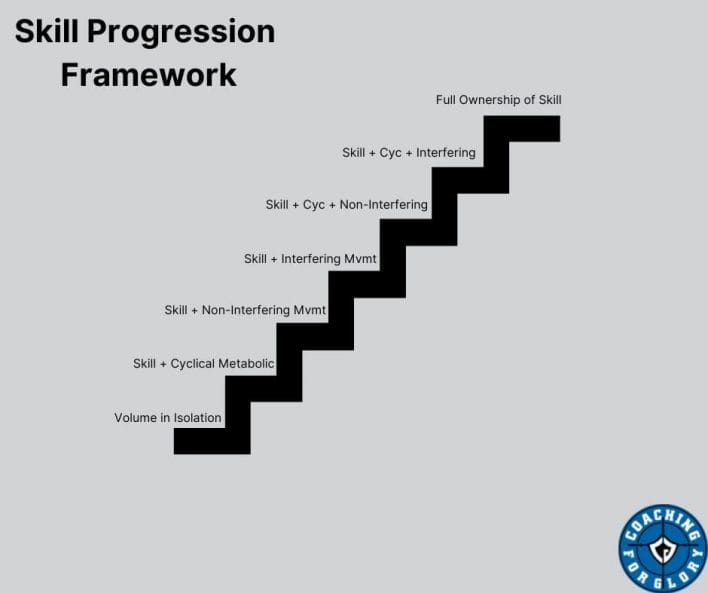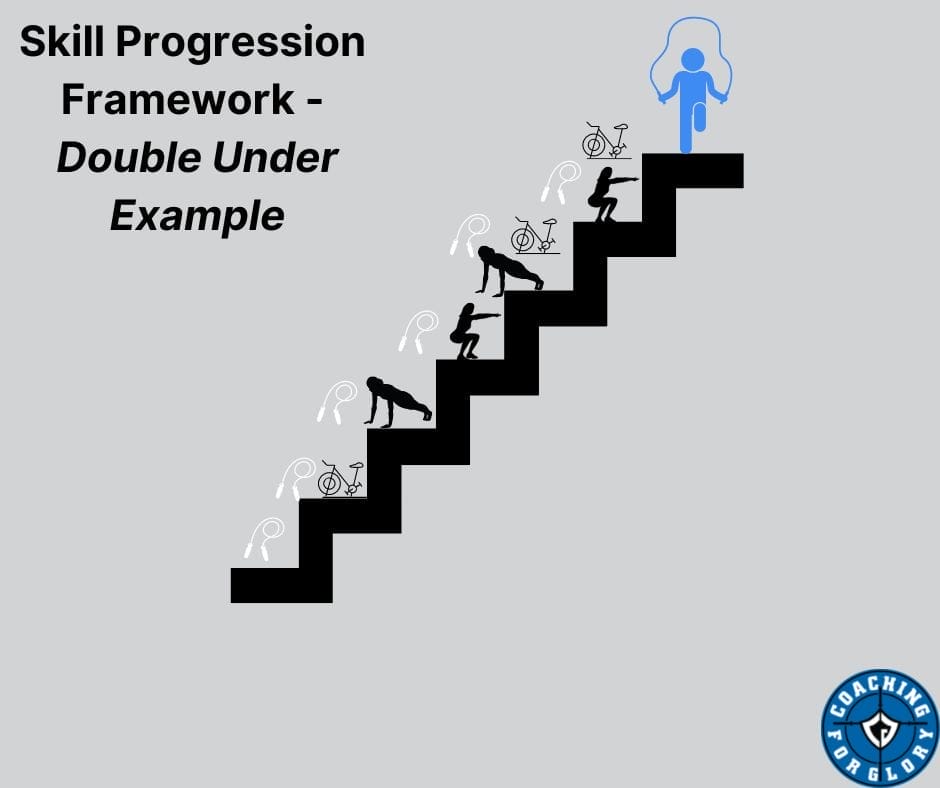I was talking with a client last week during a training session, and they mentioned that they’d really like to be able to do double-unders more consistently.
Perhaps that is a goal of yours. Or perhaps it’s something else like pull-ups, or running one mile without stopping, or doing five really good push-ups. For the purposes of continuity in thought, I’m going to stick with the double under example, but just know that you can substitute your own skill in there and the process will work the same.

How the Process Works
After learning that more consistency in double-unders was the goal, it was time to dig deeper. The first thing we needed to get clear on was the goal itself: ‘double-unders more consistently’ sounds descriptive, but that was just the top layer. Kinda like if someone said they wanted a place to live and you said ‘No problem, head to this address and the place is all yours!’ Upon arrival at the GPS coordinates you gave, it turned out to be a cave you used to camp out a few times a year. Of course some people would find themselves right at home there, but I’m willing to bet it’s not what the person had in mind at first.
With that in mind, I started asking questions:
- Is there a certain number in your head you’d like to do?
- When you say ‘do them more consistently,’ do you mean on their own? Or will it be combined with other movements?
- Do you want to be able to do them without breaking them up?
- …you can see where this is going right? I’m trying to paint a clear picture of the objective we’re after.
Here’s what we settled on: this person wanted to be able to do thirty reps in a row, unbroken, no matter how tired they were, and no matter what movements they were combined with.
Time to Reverse Engineer
Once we have an end point, we then need to understand where they were starting from. Here were some questions asked and answered:
- Can you do one double under?
- Can you do two double-unders in a row?
- What is the maximum number of double-unders in a row you’ve ever done?
- When paired with other grip taxing movements, are you still able to do that many in a row?
- When paired with other cardio taxing movements, are you still able to do that many in a row?
All of these questions help inform and influence the starting point for our training plan as well as progressions to be used.

Next Steps
After getting our starting and end points, the rest is pretty basic.
Step one is that you need to build volume in the skill in isolation. This means that you don’t pair it with anything else – no other movements, nothing that will cause any undo fatigue, either mechanical or metabolic. In our case, this client will start with sets of double unders that are less than what they are capable of until they exceed the desired number.
- Ex: they can do 7 in a row pretty reliably, so in the interest of being conservative, we will start by doing 6 sets of 5 in a row. They will rest as needed in between each set until they are 100% confident that they can complete the next set with success. This simple progression will be performed 1-2x per week for 3-4 weeks, with no change whatsoever.
Step two is that you pair it with something cyclical to challenge you metabolically (think increased breathing rate). So to continue our example above, you’d do a set of 5 unbroken reps, and then pedal easy on the assault bike for 30s. If you are unable to complete the requisite number of reps, then you just take things down a notch.
Step three is that you pair it with something that is a non-interfering movement. In the case of double-unders, since they are a dynamic lower-body movement, you could choose something upper body (like a push-up) or core related to pair it with.
Step four is that you pair it with something that is an interfering movement. Here is where a bit of coaching artistry comes in: while a box jump would certainly be classified as an interfering movement with double unders, I think it’s too much too soon. I’d choose something like a squat or controlled hinge pattern (think deadlift) to pair it with.
Step five is that you put it into a workout that combines a metabolic element and a non-interfering movement. So you could choose double-unders, assault bike, and push-ups.
Step six is that you put it into a workout that combines a metabolic element and an interfering movement; meaning double unders + assault bike + squat.
Step seven is really where you have complete ownership of the goal no matter what else surrounds it.

Then What?
So what happens when you change your goal from “thirty reps in a row, unbroken, no matter how tired they were, and no matter what movements they were combined with” to “fifty reps in a row, unbroken, no matter how tired they were, and no matter what movements they were combined with?” Simple – go back to step one. Thankfully since you’ve built such a robust foundation within the pattern that a double under requires, you will move through each step in a much quicker fashion!



